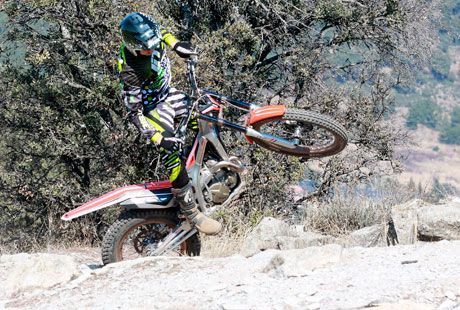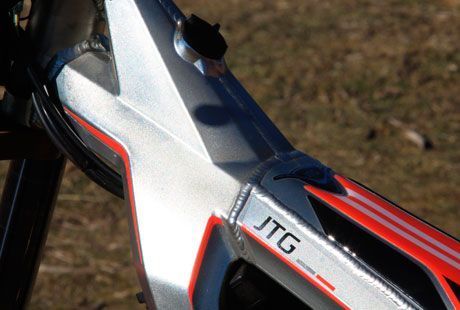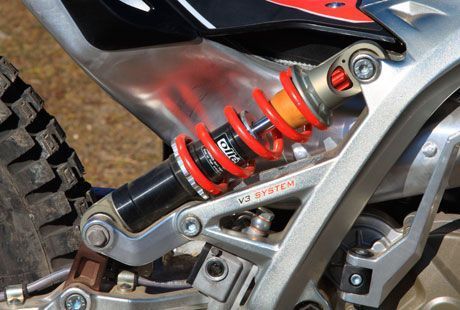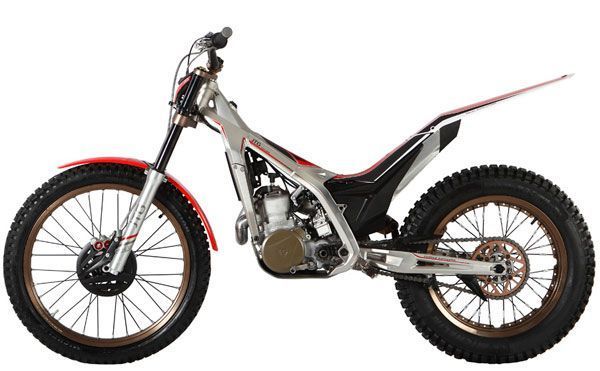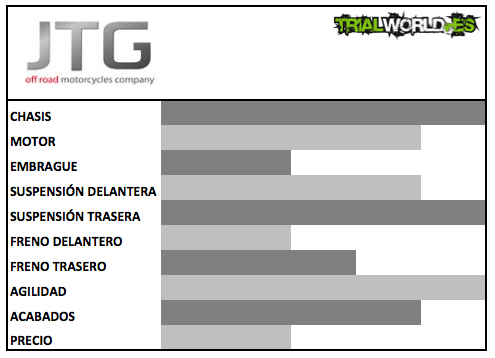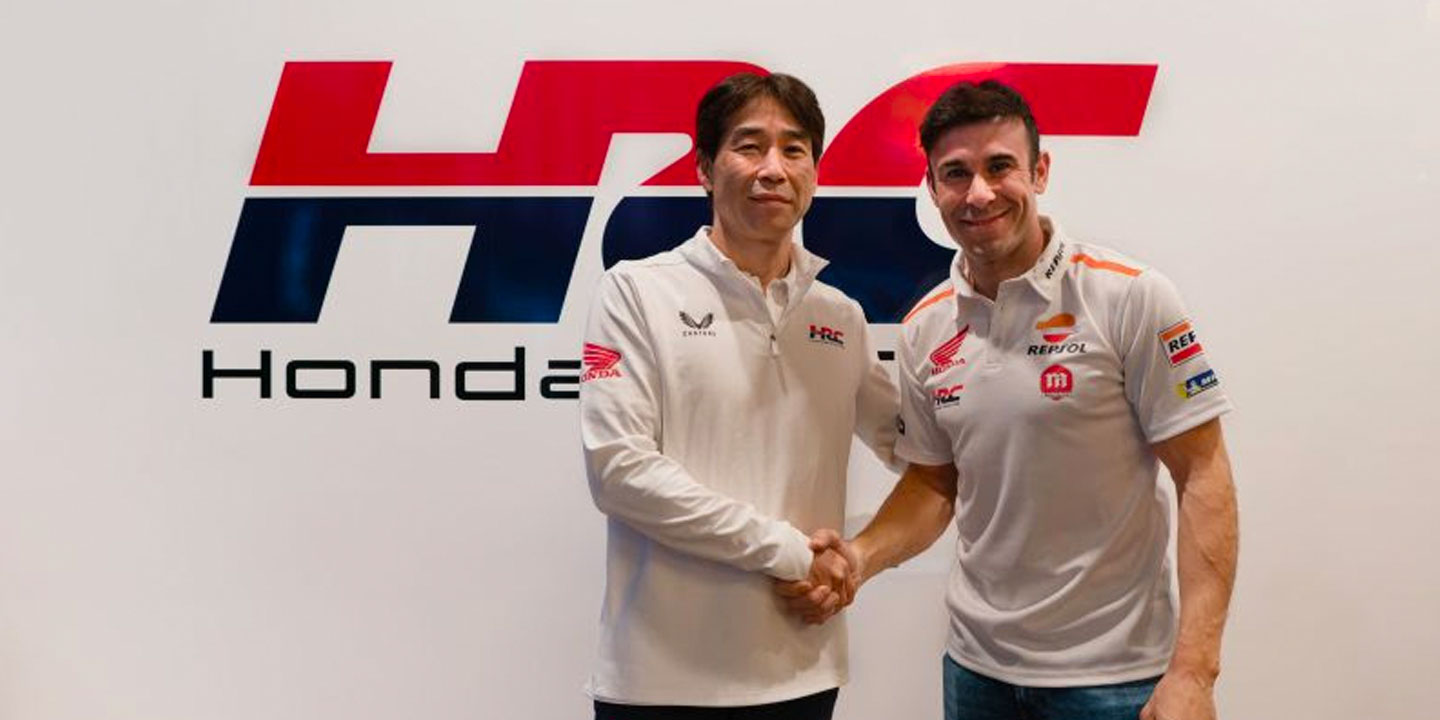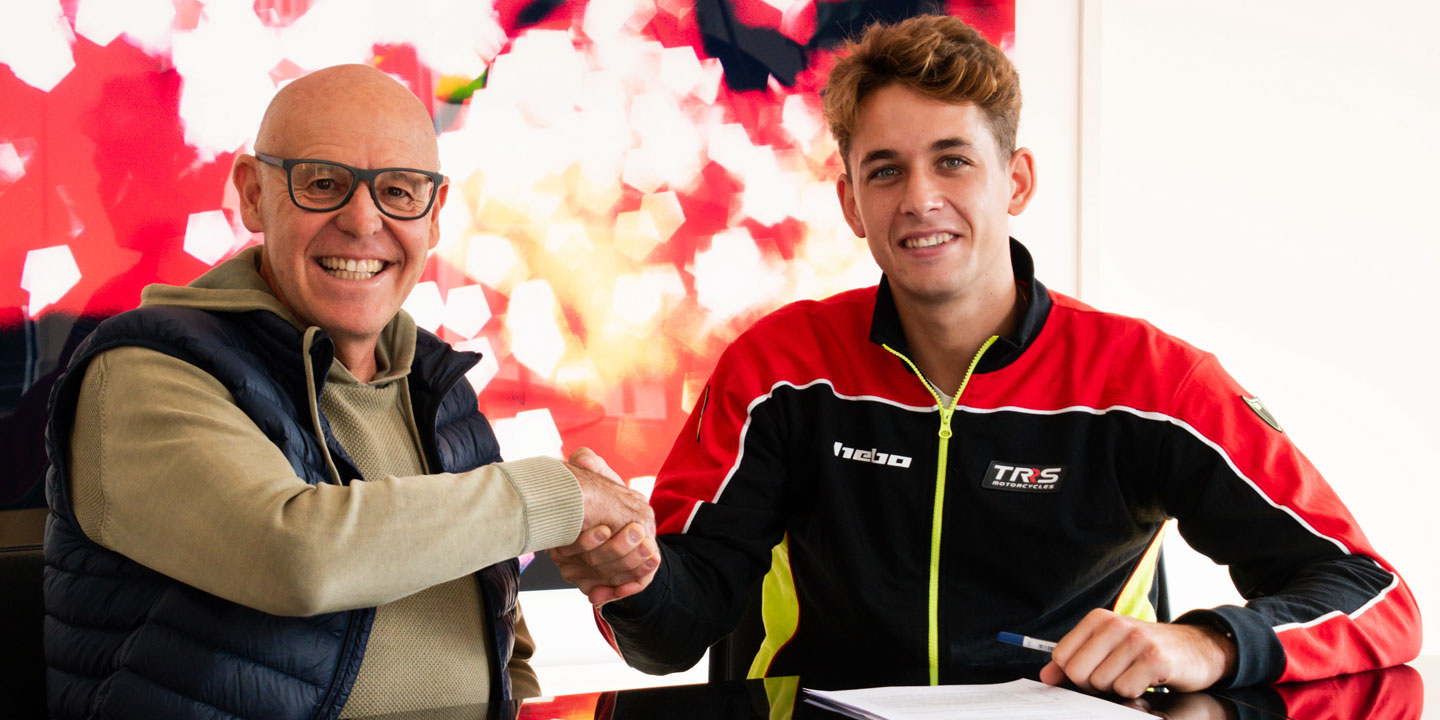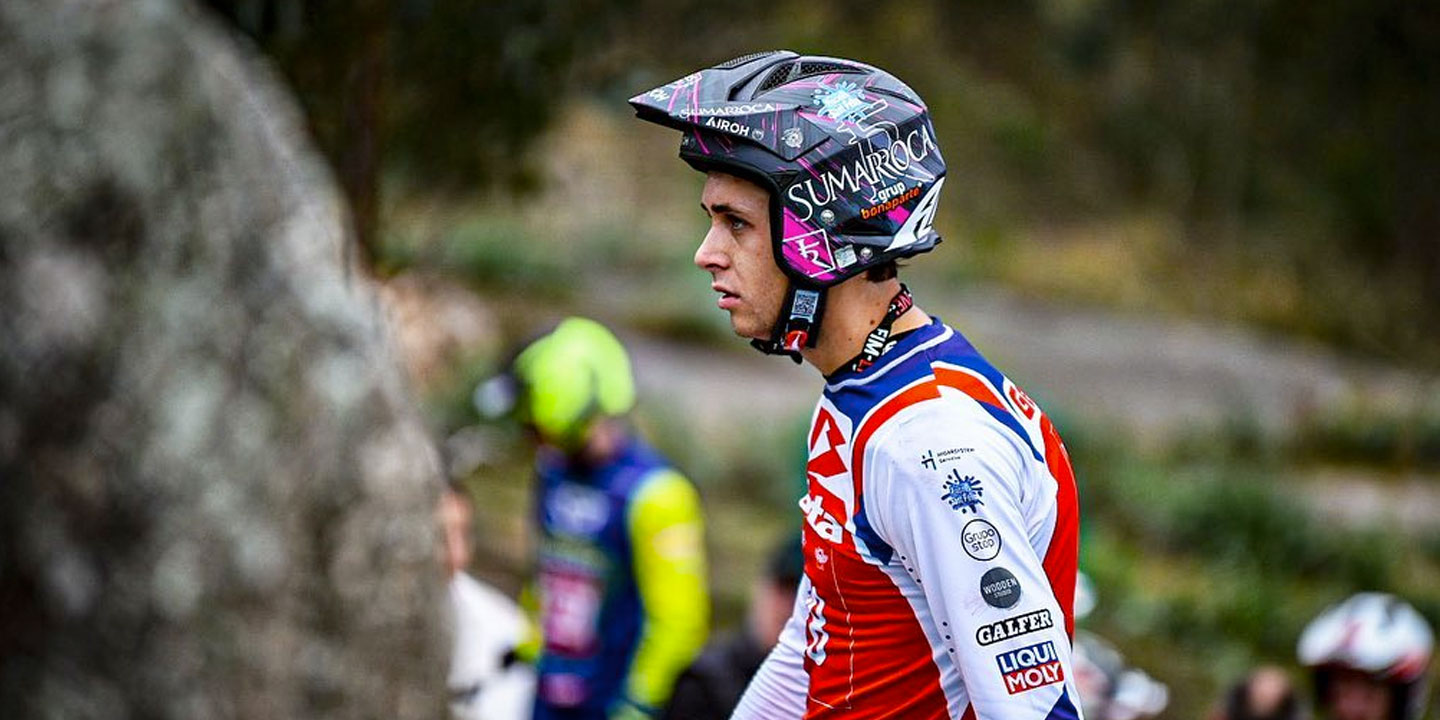A year ago the Jotagas team, a new company dedicated to the manufacture of Trial and Enduro motorcycles, began to raise the curtain little by little on an ambitious project that was being forged in the Teruel town of Alcañiz, specifically in the Motorland Technopark.
Just a few months earlier, in August 2010, Jotagas S.L. was incorporated. There is a key figure in the team: Jordi Tarrés. The most successful rider of all time, with 7 world titles and 61 Grand Prix victories, as well as the best ambassador our sport has ever had. Having Jordi means, in addition to experience and criteria, a juicy media incentive that is key to achieving the notoriety that a new brand needs in a market as atomized and unique as that of Trial motorcycles.
Throughout this year we have been receiving information in dribs and drabs, which has basically served to make us all eager to see the forms and characteristics of the new project. That moment came on November 8 at the Milan Motor Show. Since then, JTG has been working hard with its main rider, Pol Tarrés , nephew of the seven-time champion, to continue evolving the bike in competition and continue polishing details to the JT.
However, it was not until February that dealers began to receive the first 50 units of the JT 300 that have been manufactured. One of them is the protagonist of this report, facilitated by Difrenos, with which we have carried out intense tests for more than 12 hours, with the collaboration of a dozen pilots with different levels of piloting.
Despite all the uproar that the JT has caused, after more than 10 years as a tester specialized in Trial, where I have had the opportunity to test all the models manufactured in series and a good part of the official ones, I am very clear that Expectation is not synonymous with success. In addition We are in a sector that does not forgive mistakes, neither in concept nor in excess of youth. It took Gas Gas, for example, more than four years to shake off the disastrous image of the first TXT Pro; the consumer has not allowed himself to be captivated by the “low cost” projects such as Xispa or the recent rehash they have made with the Scorpa; not even the rebirth of a mythical brand like Ossa, whose decadent second-hand market speaks for itself, guarantees success.
EXCLUSIVE CYCLE PART
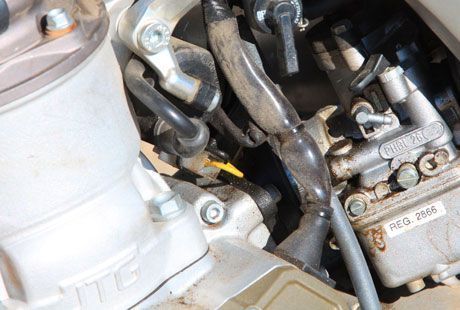
You don’t need to start the bike to get first impressions. Aesthetically it is sober and elegant, with very neat lines and graphics that seek not to detract from the pleasing shapes drawn by the frame and, above all, the swingarm. The latter, made of 6061 forged aluminium, It receives some interesting and infamous inserts in its central part, providing a feeling of lightness and exclusivity which is accentuated if you look at its shapes from the right side, where the anchor of the rear suspension system referred to as V3 (three linkages, three bolts and three movements on a single axis).
We could say that this rear suspension system is the JTG’s most drastic bet and one of the main points of differentiation. Conceptually, this position has been designed with the aim of exerting longitudinal pressure on the main tube of the chassis and on the higher profile of the swingarm. The shock absorber itself is signed by Ollé.
Although we will now talk about its dynamic behavior, we must say that the finish of this component is exquisite and made us change the low expectations we had about such a revolutionary system topped by a shock absorber such as the Ollé (brand that also supplies Sherco), a priori discreet. Aesthetically, the V3 set is spectacular, but perhaps too exposed to shocks. Time, use and old age will give us an answer to this point.
Something similar happened to us with the fork, because in a context where Marzocchi, Showa or Paioli dominate, we did not know what a brand like Tec h (39 mm. diameter) could have in store for us. In terms of finishes, we can say that the level is optimal, in line with the rest of the market.
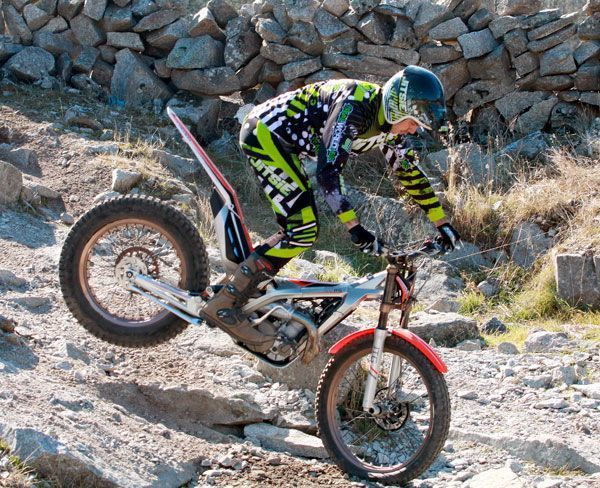
Thechassis of the JTG is a real orA great deal of art, both in terms of finish, geometries and success in dynamic performance. For us, without a doubt, it’s the strongest point of the bike and the premise on which we base ourselves to say that the JTG is a very well-built bike. The impulse of personality that the technicians have thrown into this component is admirable, avoiding the fashion of the tubular chassis imposed by Gas Gas and Sherco, opting for a path closer to the Beta, which fuses tradition, robustness, elegance and efficiency.
IN DETAIL
The JTG’s engine is neither groundbreaking nor technically revolutionary; rather, technicians have focused on what really works: a carburetion-powered 2T. We are struck by the silencer, shorter than normal, removable in its final section, with sharp lines and a finish that can still be improved. As a note, in our unit, without having suffered blows, the exhaust on its inner face rubbed against the tire.
Finally, before starting with the dynamic test, we highlight other details that in our opinion can be improved, but justifiable in a “pre-series” like this. The starter lever rubs against the middle silencer andThe finish of the wiring in the engine, with very visible clemas, is not at the level of exquisiteness of the rest of the bike. Otherwise, the JTG boasts a remarkable level of finishes, even in lower-ranking details where a good part of its rivals are a disaster, such as the kickstand.
AT THE CONTROLS
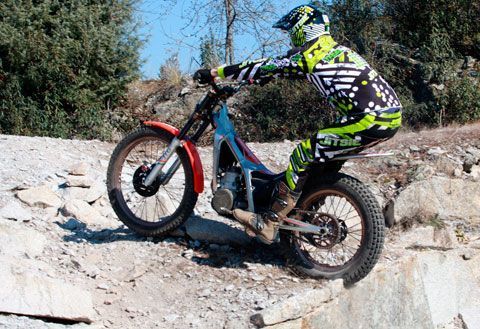
With our boots on, we get behind the controls of the JTG to check what we really need to know: how it works in the zones. At the controls it is comfortable, breathing familiar sensations from the first moment and narrow, leaving evidence that the narrowness of its shapes will be synonymous with lightness when the bike starts rolling.
Starting up is not difficult at all and a bronco engine quickly comes to life, forceful at the slightest hint of the throttle and a personal sound, but which reminded more than one, saving the distances, of the Beta EVO.
In the first few meters we already ran into the two points that we liked least about the JTG: the behavior of the Formula controls and the feel of the gearbox. The responsibility of Formula, signing such a decisive component in Trial as the clutch, was very high, and Its performance does not meet the expectations or needs required by a motorcycle of these characteristics. In addition to losing touch in the first millimeters of the travel, it drags at all times; Although, when you have been at the controls for a long time, you end up getting used to it and accepting that, instead of complaining, you must understand their tact.
It’s not JTG’s fault, as AJP, the brand we all know, has shut down and won’t supply any brands in 2012. This problem, therefore, will be seen in almost all of 2012. Formula is a brand mainly specialized in bicycles, whose demands are very different from the Trial bike and where they still have a long way to go. To look for a positive point, theFormula levers are articulable and the risk of breakage in the event of a fall is minimized.
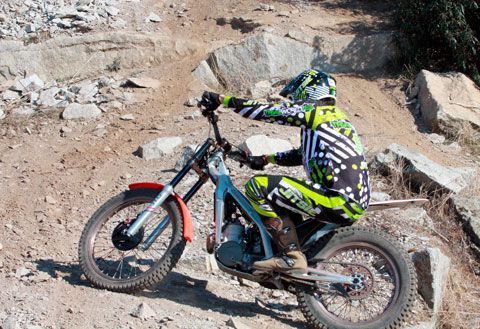
As we said, the gearbox doesn’t convince us either, neither in terms of feel nor precision. The journey between the gears is long and too many times we found ourselves at neutral when engaging the second gear. It’s also something you get used to, but we think that a bike with this price and level should be pushed to the maximum.
ACTION!
The performance of the JTG in the zones is, quite simply, amazing. We could say that this is one of the best chassis on the market; It perfectly combines lightness, rigidity, poise and nobility. Consequently, the JT is a very easy bike to ride and highly effective in the zones for a rider of any level.
Riding the JT there is no doubt that all the efforts put into the cycle part can be seen, but above all they are felt. The suspension team also shines with its own light, making the overall performance in the areas more than outstanding for a first edition.
The rear suspension has captivated us for a number of reasons. The first is its sweetness , thanks to which the rider feels that the bike perfectly matches the terrain, without dry bounces. Then because of the lightness provided by the rear end, allowing movements with little effort and receptions with aplomb. And thirdly, because it surprisingly propels you to the top of the obstacle, effectively counteracting the shortcomings in riding technique.
As far as the front end is concerned, we highlight the poise and good overall feel, exceeding the expectations we had about an unknown brand in this segment. Nothing to object to in this regard.
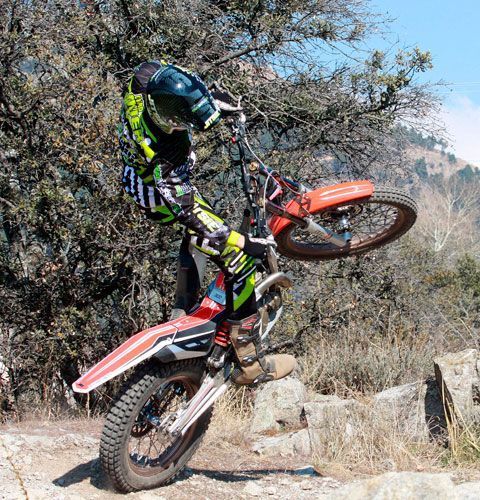
Focusing squarely on its mechanics, we should point out that the 300 of our test unit was not well tuned. It was probably an inaccurate carburetion, but the engine didn’t rev cleanly. However, when you cleaned it well, it left you with a little respite, where we were able to test its potential.
In our opinion, compared to its rivals, for a 300 engine it is very smooth and noble. This premise fits perfectly with the character of its part cycle and the key to making it A bike suitable for all audiences. However, by contrast, We would have liked to have had the opportunity to also test a 280 and 250, as the latter is the ideal displacement for 80% of fans.
The engine stretches hard, is forceful and competitive. However, once again based on the fact that a bike of this price and level must be demanded the maximum, we consider that the 300 should come with a Keihin carburetor as standard to satisfy the highest level riders. For the others, there are already 250 and 280.
CONCLUSIONS
JTG has delivered. Neither the expectation of a launch, nor having the best sponsor of the project means guarantees success. However, the first big step to achieve this is to rely on effective work that is a good starting point to continue evolving, and that point has been achieved.
Now JTG has to captivate the users of the rest of the brands , which are also pushing hard, since the market is relatively small and very select. In addition, the user who wants a JTG will have to face a hefty outlay of 6,299 euros, a price that in our opinion is too high, especially if we take into account that right now any 2011 costs to sell for more than 3,500 euros.
Text and action: David Quer @trialworld
Photos: JLQ
Kit: JITSIE & Forma
With the collaboration of Difrenos
TECHNICAL SHEET JTG JT 300 (6.299 €)
Engine: Single-cylinder two-stroke.
Crankcases: Aluminum
Cooling: Liquid
Intake: By direct slats to the crankcase
Displacement: 301.58 cc (250 & 280)
Bore x stroke 80×60
W75 gearbox and clutch oil
5-speed gearbox
Digital Ignition CDI HIDRIA with 2 maps
Primary Transmission Gears
Secondary Transmission Per Chain
Dellorto PHBL 26 BS Carburetor
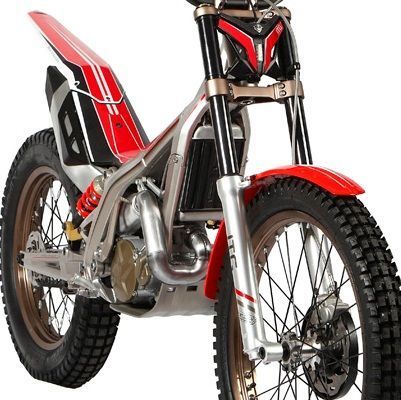
Swingarm: Forged aluminium
Front suspension: 39mm TECH hydraulic adjustable COM-EX 175mm travel
Rear suspension PROGRESSIVE 175MM. OLLE 175mm shock absorber
Front brake: Disc diameter 185mm caliper 4 pistons FORMULA
Rear Brake: Disc diameter 150mm caliper 2 pistons FORMULA
Rims: 32-spoke duralumin
Controls: DOMINO Gas Grip
Crankcase protector: Duralumin 7075
Brake pedal: 7075 forged aluminum retractable dropout
Handlebar: S3 variable section
Weight: 65 Kg (not verified)
Fuel tank: Integrated into the 2.7 Litre chassis
